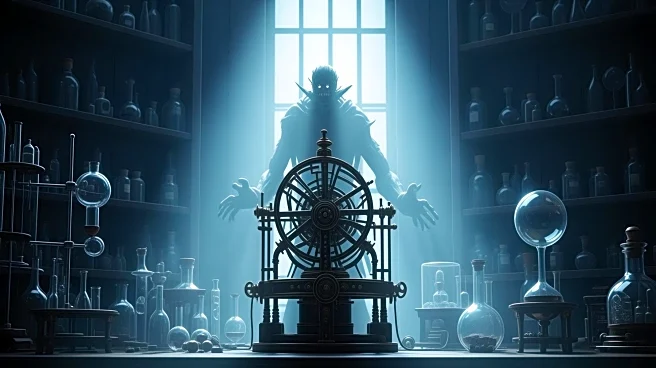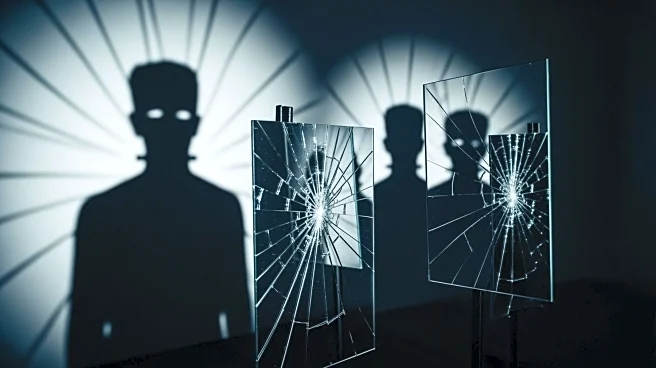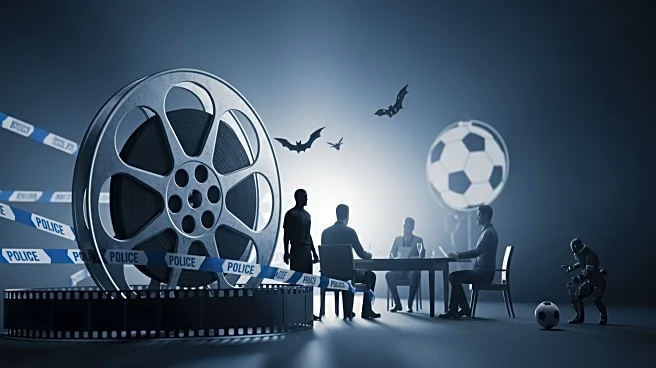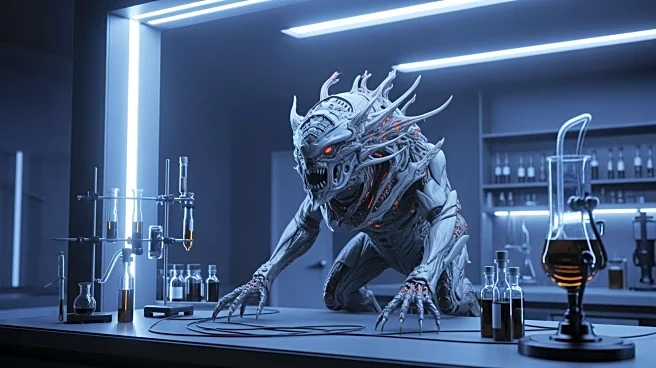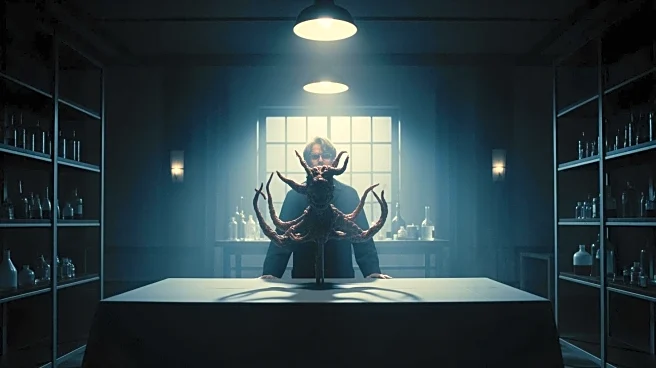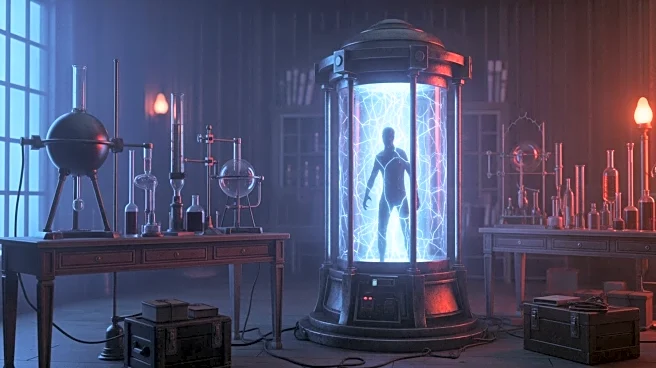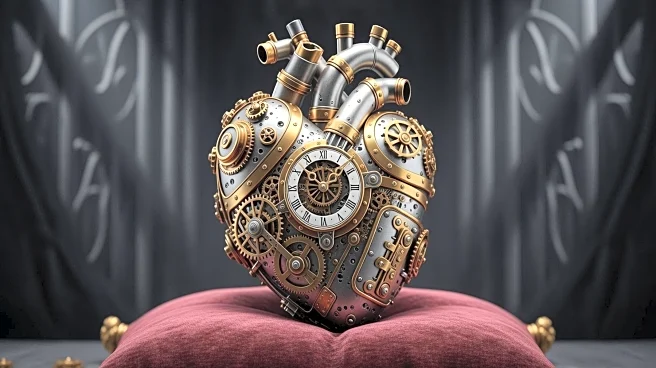What's Happening?
Netflix has released the first full look at Jacob Elordi as the creature in Guillermo del Toro's adaptation of Frankenstein. The portrayal, which is now playing in select theaters, features Elordi as a reanimated
creature created by Victor Frankenstein, played by Oscar Isaac. This version of the monster is more aligned with Mary Shelley's original 1818 novel, showcasing a creature with pale skin, scars, and long dark hair, diverging from the classic 1930s depiction by Boris Karloff. Del Toro's interpretation aims to present the creature as a 'newborn soul,' with a unique aesthetic that avoids the appearance of a patched accident victim. The film is set to premiere on Netflix on November 7.
Why It's Important?
This adaptation of Frankenstein by Guillermo del Toro is significant as it revisits the classic tale with a fresh perspective, potentially influencing the horror genre and its portrayal of iconic characters. By aligning more closely with the original novel, the film may appeal to purists and new audiences alike, offering a deeper exploration of the themes of creation and identity. The involvement of high-profile actors like Jacob Elordi and Oscar Isaac, along with del Toro's direction, could attract a wide viewership, impacting Netflix's streaming numbers and reinforcing its position in producing high-quality original content.
What's Next?
Following its theatrical release, the film will be available for streaming on Netflix starting November 7. The reception of this adaptation could influence future projects by del Toro and Netflix, potentially leading to more classic literature adaptations. Audience and critical reactions will likely shape the narrative around the film's success and its impact on the horror genre.
Beyond the Headlines
Del Toro's approach to Frankenstein may spark discussions on the ethical implications of creation and the human condition, themes central to Shelley's novel. The film's portrayal of the creature as a 'newborn soul' could lead to a reevaluation of the monster's role in popular culture, shifting the focus from horror to a more nuanced understanding of its character.
